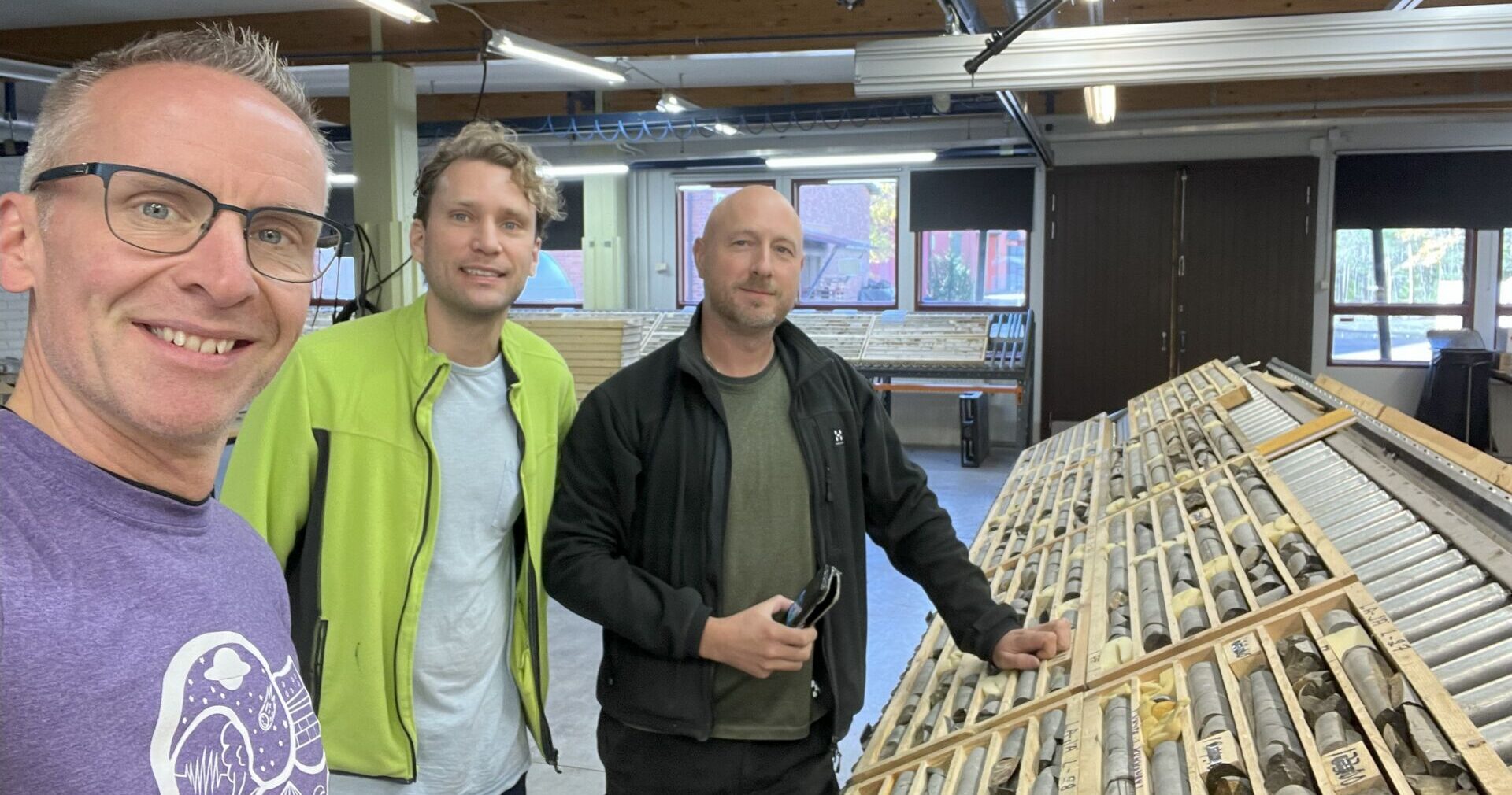Science
Researchers Uncover Ancient Microbial Life in Finnish Meteorite Crater

An international team of researchers has made a groundbreaking discovery in the Lappajärvi impact crater in Finland, revealing traces of ancient microorganisms that provide new insights into the origins of life on Earth. This research, which marks the first successful dating of microbial birth in a meteorite crater, suggests that life established itself millions of years after the impact of the meteorite.
The Lappajärvi crater, formed approximately 78 million years ago, serves as a critical site for understanding how meteorite impacts can create habitable environments on Earth and potentially other planetary bodies. The findings were published in the prestigious journal Nature Communications.
Connecting Microbial Activity to Meteorite Impacts
Gordon Osinski, a professor of Earth sciences at Western University and a co-author of the study, expressed enthusiasm about the implications of this research. “This is incredibly exciting research as it truly connects the dots for establishing life on Earth for the first time,” he stated. Previously, evidence suggested that microbes colonized impact craters, but questions remained regarding the timing of this colonization and whether it was linked to the meteorite’s impact or occurred through other processes later on.
The study confirms that the impact event generated a warm and wet environment, facilitating the colonization by microorganisms shortly after the crater’s formation. Osinski collaborated closely with international peers, contributing to sampling and geological interpretation of the drill core extracted from the crater.
Professor Henrik Drake from Linnaeus University in Sweden, the study’s senior author, emphasized the significance of the research. “This is the first time we can directly link microbial activity to a meteorite impact using geochronological methods. It shows that such craters can serve as lifelong habitats in the aftermath of the impact,” he explained.
Evidence of Early Life and Its Impact
The research team employed various isotopic analyses of mineral fillings within rock fractures and cavities to establish that microbial colonization began a few million years post-impact, within the crater’s hydrothermal system at temperatures around 47°C. A hydrothermal system refers to heated water circulating through underground fractures, creating chemically modified fluids conducive to life.
The chemical signatures detected in the minerals indicated microbial sulfate reduction, a crucial process for subsurface life. The presence of sulfur, an essential element for life, alongside the confirmation of its reduction, provides compelling evidence that microorganisms thrived in the crater.
Additionally, the study documented later mineral formations, occurring more than 10 million years after the impact, which showed signs of methane consumption and production. This further substantiates the long-lasting microbial activity in the area.
“This research not only identifies signs of life but also pinpoints when it occurred. This gives us a timeline for how life finds a way after a catastrophic event,” stated Jacob Gustafsson, a PhD student at Linnaeus University and the study’s first author.
The findings from the Lappajärvi impact crater not only deepen our understanding of life’s origins but also highlight the potential for similar environments across the solar system. The implications of this research may extend beyond Earth, opening new avenues for exploring life’s possibility on other planetary bodies.
-

 Education3 months ago
Education3 months agoBrandon University’s Failed $5 Million Project Sparks Oversight Review
-

 Science4 months ago
Science4 months agoMicrosoft Confirms U.S. Law Overrules Canadian Data Sovereignty
-

 Lifestyle3 months ago
Lifestyle3 months agoWinnipeg Celebrates Culinary Creativity During Le Burger Week 2025
-

 Health4 months ago
Health4 months agoMontreal’s Groupe Marcelle Leads Canadian Cosmetic Industry Growth
-

 Science4 months ago
Science4 months agoTech Innovator Amandipp Singh Transforms Hiring for Disabled
-

 Technology3 months ago
Technology3 months agoDragon Ball: Sparking! Zero Launching on Switch and Switch 2 This November
-

 Education3 months ago
Education3 months agoRed River College Launches New Programs to Address Industry Needs
-

 Technology4 months ago
Technology4 months agoGoogle Pixel 10 Pro Fold Specs Unveiled Ahead of Launch
-

 Business3 months ago
Business3 months agoRocket Lab Reports Strong Q2 2025 Revenue Growth and Future Plans
-

 Technology2 months ago
Technology2 months agoDiscord Faces Serious Security Breach Affecting Millions
-

 Education3 months ago
Education3 months agoAlberta Teachers’ Strike: Potential Impacts on Students and Families
-

 Science3 months ago
Science3 months agoChina’s Wukong Spacesuit Sets New Standard for AI in Space
-

 Education3 months ago
Education3 months agoNew SĆIȺNEW̱ SṮEȽIṮḴEȽ Elementary Opens in Langford for 2025/2026 Year
-

 Technology4 months ago
Technology4 months agoWorld of Warcraft Players Buzz Over 19-Quest Bee Challenge
-

 Business4 months ago
Business4 months agoNew Estimates Reveal ChatGPT-5 Energy Use Could Soar
-

 Business3 months ago
Business3 months agoDawson City Residents Rally Around Buy Canadian Movement
-

 Technology2 months ago
Technology2 months agoHuawei MatePad 12X Redefines Tablet Experience for Professionals
-

 Business3 months ago
Business3 months agoBNA Brewing to Open New Bowling Alley in Downtown Penticton
-

 Technology4 months ago
Technology4 months agoFuture Entertainment Launches DDoD with Gameplay Trailer Showcase
-

 Technology4 months ago
Technology4 months agoGlobal Launch of Ragnarok M: Classic Set for September 3, 2025
-

 Technology4 months ago
Technology4 months agoInnovative 140W GaN Travel Adapter Combines Power and Convenience
-

 Science4 months ago
Science4 months agoXi Labs Innovates with New AI Operating System Set for 2025 Launch
-

 Technology4 months ago
Technology4 months agoNew IDR01 Smart Ring Offers Advanced Sports Tracking for $169
-

 Top Stories2 months ago
Top Stories2 months agoBlue Jays Shift José Berríos to Bullpen Ahead of Playoffs










